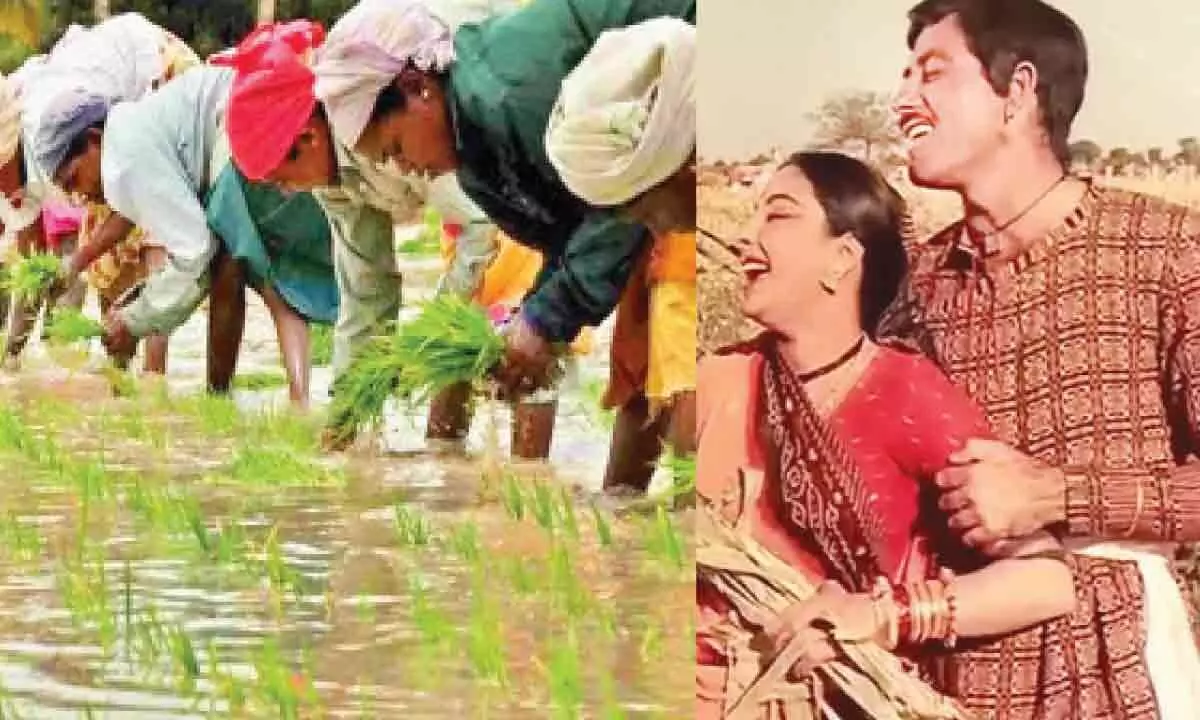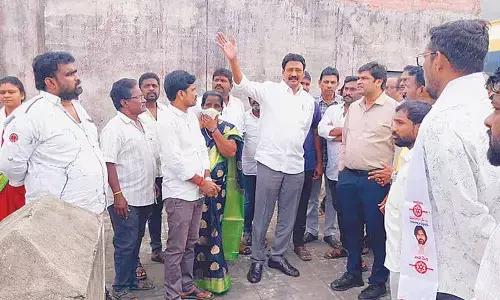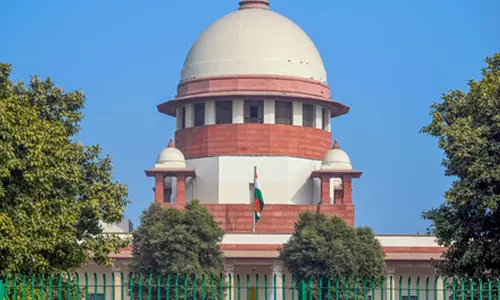Sowing seeds of song: Indian agricultural folk music captures land rhythm

Over the course of many centuries, the agricultural folk songs of India have been a significant component of India’s cultural history.
Over the course of many centuries, the agricultural folk songs of India have been a significant component of India’s cultural history. These songs are a tapestry that is made from sweat, soil, and the spirit of rural life. These songs, sung by the weathered hands of farmers tilling the soil, echo the cadence of labor, sung about planting and harvest, rain and drought, and life’s joys and sorrows. Each region boasts its own unique flavor, from the Punjabi ballads of wheat fields to the Carnatic chants of rice paddies.
However, these songs face the threat of vanishing due to urban migration, mechanisation of farms, and the fading appeal of traditional practices. With each passing generation, the melodies risk becoming faint echoes, a forgotten chapter in India’s cultural heritage. A wave of preservation efforts is rising, determined to keep the rhythms of the earth alive. There are limited researchers who are documenting the songs, interviewing elders, and transcribing lyrics. Cultural activists are organising festivals and workshops, bringing together young and old to learn and share these musical traditions. Technology plays a role in this movement, with online platforms archiving recordings and fostering virtual communities of singers.
There is a serious endanger to these songs as they have vanished from the disappearing villages that have transformed into concrete jungles.
The agriculture songs include the socio-cultural and economic description of the time. With the diminishing usage of dialects and languages the pride and joy of singing, passing down the songs to the children has been challenging. There is zero hope for the communities to ensure their melodies weave through future generations.
Education sector can work on incorporating these songs into their curriculum instead of poems from western poets, which will nurture a respect for their cultural significance. Preserving agricultural folk songs is not just about protecting melodies; it’s about safeguarding the stories and wisdom they carry.
In addition to being a source of pleasure, these songs are a repository of knowledge about sustainable farming practices, weather patterns, and the delicate balance between humans and nature. They provide a detailed account of the complicated cycles of planting and harvesting, the volatility of the weather, and the profound knowledge of sustainable agricultural techniques that has been perfected over the course of many centuries. A profound look into the heart of rural India is provided by these stories, which are filled with tales of love and loss, of resiliency and hope.
There is a wide variety of agricultural folk songs in India, which are a reflection of the language, area, and practice diversity that exists throughout the subcontinent. The celebration of the changing of the seasons, the invocation of gods linked with rain, fertility, and agriculture, and the celebration of collective labour and togetherness are all common themes. Agricultural imagery is often mixed with love and yearning themes, which are used to portray the aspirations and dreams of young men and women. Not only do these songs include humour and sarcasm, but they also make fun of social hierarchy, landlords, and the unpredictable weather.
Some examples of agricultural folk songs from India include songs from the Punjabi language such as “Maahi Ve” and “Sohni Dharti,” songs from the Tamil language with devotional themes, songs from the Telugu language about love and grief, and Bengali Baul songs that celebrate the link between people and environment. Although Tamil songs often incorporate religious themes and laud deities such as Rain Manikka Vinayagar for abundant harvests, Punjabi farmers’ songs are noted for their lively rhythms and joyful mood. Punjabi farmers’ songs are also recognised for their vibrant rhythms. The use of agricultural imagery to convey feelings is common in Telugu folk songs that are about agriculture. These songs often portray themes of love and grief. When taken as a whole, Indian agricultural folk songs are a rich mosaic of cultural expression and joy.
Indian cinema has a rich history of incorporating agriculture folk songs into films, adding authenticity, depth, and emotional resonance to narratives set in rural landscapes or exploring themes related to farming and the land. Notable examples include Do Bigha Zameen (1957), which celebrates the cycle of seasons, Mother India (1957), which showcases the connection between farmers and their land, and Lagaan (2001), which features Punjabi folk songs that celebrate community and teamwork during agriculture.
Devotions to deities are also prominent, with songs like ‘Heera Moti’ (1959) and ‘Dharti Maa’ (1989) addressing Mother Earth for a bountiful harvest. Community labour and solidarity are depicted in ‘Do Aankhen Baarah Haath’ (1957), ‘Taare Zameen Par’ (2007), and ‘Chak De India’ (2007). Love and longing are explored in ‘Kabhi Haan Kabhi Naa’ (1994), ‘Saawariya’ (2007), and ‘Dilwale Dulhania Le Jayenge’ (1995). Humor and satire are also used in films like ‘Sholay’ (1975) and ‘Andaz Apna Apna’ (1994), which use folk songs to portray the importance of hard work and initiative in farming. These songs not only add realism and cultural context but also contribute to the emotional core of the narratives, making them relevant and relatable to audiences across generations.
The future of these agricultural folk songs hangs in a delicate balance. The lure of urban migration, the mechanisation of farms, and the fading appeal of traditional practices threaten to silence these ancient melodies. There is a serious need to promote and create awareness by organizing festivals and workshops, reviving interest among the younger generation and fostering a sense of pride in these musical traditions. Preserving agricultural folk songs is not just about protecting melodies; it’s about safeguarding the stories, knowledge, and wisdom they carry. They are a reminder of our deep connection to the land, the delicate balance between humans and nature, and the beauty found in simple, hard work.
















